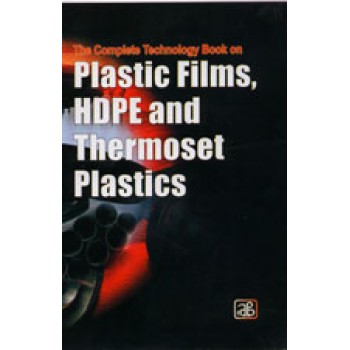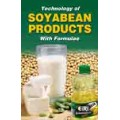The Complete Technology Book on Plastic Films, HDPE and Thermoset Plastics
| Price: | Rs.1,175.00 |
Detail Of The Complete Technology Book on Plastic Films, HDPE and Thermoset Plastics
| ISBN | 8178330113 |
| Pages | 608 |
| Language: | English |
| Product Code: | 1 |
| Size(in cm): | 21*13.5 cm |
| Weight(in grams): | 500(approx) |
Description:
Plastic Films, HDPE and Thermoset Plastics are now an accepted part of the industrial and domestic scenes but this growth has been comparatively recent. Plastic films are typically used for sealing food items in containers to keep them fresh over a longer period of time. Plastic wrap, typically sold on rolls in boxes with a cutting edge, clings to many smooth surfaces and can thus remain tight over the opening of a container without adhesive or other devices. The past several years have seen numerous plastic films developed for the packaging industry, the most used today being polyethylene. Cast polypropylene film, like polyethylene film is unoriented (not stretched), but it was found that an improved film could be obtained by orientation (stretching the cast in one or more directions). Biaxial orientation is the process whereby the continuous cast film or sheet of plastic is heated up to brings it to a temperature that makes it stretchable. BOPP film possesses superior tensile strength, flexibility, toughness, shrink ability, good barrier and optical characteristics. The use of polyethylene terephthalate film is increasing considerably in recent years in videos audio magnetic tapes, computer tapes, photo and X ray films, power capacitors, insulation tapes and metalling for artificial zari. High density polyethylene (HDPE) or polyethylene high density (PEHD) is a polyethylene thermoplastic made from petroleum. The major applications of HDPE are in the manufacturing of containers, pipes, house wares, toys, filament, woven sacks, film, wire and cable insulation. HDPE is lighter than water, and can be moulded, machined, and joined together using welding (difficult to glue). Thermoset, or thermosetting plastics are synthetic materials that strengthen during being heated, but cannot be successfully remolded or reheated after their initial heat forming. This is in contrast to thermoplastics, which soften when heated and harden and strengthen after cooling. Thermoplastics can be heated, shaped and cooled as often as necessary without causing a chemical change, while thermosetting plastics will burn when heated after the initial molding. Additionally, thermoplastics tend to be easier to mold than thermosetting plastics, which also take a longer time to produce (due to the time it takes to cure the heated material).
Some of the astonishing fundamentals of the book are salient features of contemporary, technology and current research, three basic processes: advances, modern polyethylene, processes using high yield catalysts, solution polymerization processes, polyolefins, low density polyethylene, polyvinylidene chloride (PVDC), vinyl chloride/vinyl acetate copolymers, polyvinyl acetate, polyvinyl alcohol, physical and chemical properties, manufacturing methods, extrusion of film, slit die extrusion (flat film extrusion), comparison of blow and cast film processes, water cooled polypropylene film, calendaring, solvent, casting, casting of regenerated cellulose film, orientation of film, expanded films, plastics net from film, unsaturated polyester and vinyl ester resins, thermoset polyurethanes, guidelines and theories in compounding polyurethane elastomers, compounding for thermoset polyurethane elastomers, cellulose and cellulose derivatives, thermoplastic polymers etc.
The present books offer an up to date overview of the processing of plastic films, HDPE and thermoset plastics. This book is suitable for entrepreneurs, researchers, professionals, technical institutions etc.
Reviews (0)
Write a review
Your Name:Your Review:
Note: HTML is not translated!
Rating: Bad Good
Enter the code in the box below:
Recently Viewed



 |
| 
